The Empire Strikes Chords: An Epic Guitar Lesson
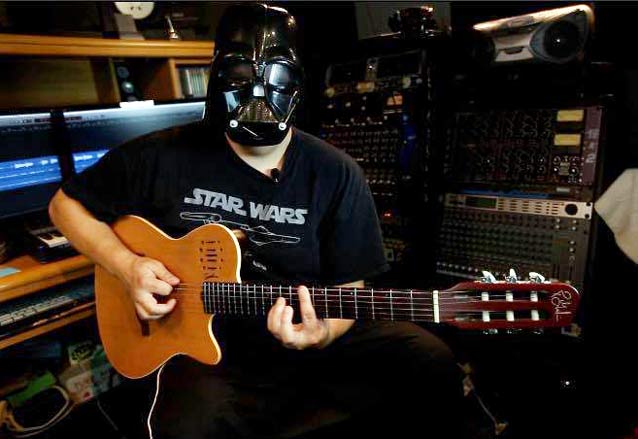
Joey Lodes of MaelstroM here. Let's all just agree...The Empire Strikes Back was the best.
I know it, you know it, Yoda knows it. It's still the one that all other Star Wars movies are compared to.
As great and groundbreaking as the original was, Empire upped the ante on everything—the story, the character development, the depth, the effects, the saber duel and, of course, the music. John Williams, after already establishing himself with the scores to Jaws, Star Wars, Close Encounters and Superman, further solidified his place in cinema history with the score to The Empire Strikes Back.
"The Imperial March (Darth Vader's Theme)" is still one of the most powerfully epic pieces of symphonic music ever written. What makes this piece stand out from his other compositions is its chordal motif—minor chords descending (or ascending) in major 3rd intervals.
When I was younger, the first riffs I wrote eventually became MaelstroM's first song, "Predestined." For the choruses, I wanted to have something that stood out as well, something powerful and dramatic, but the song (written at the peak of the thrash metal movement in the late Eighties) was already, speed-wise, full tilt. So I wrote a chordal progression and based arpeggios and fills around—you guessed it—the Empire chords.
EXAMPLE 1: “Predestined” Chords
E minor, C minor, Ab minor, back to E minor. Play these chords and you'll hear how the roots of are each separated by a major 3rd. You'll also hear the internal movement of the 5th of the first chord, B, move up a half step to the root of the next chord, C. You'll also hear the root of the first chord, E, move down a half step to the minor 3rd of the second, Eb. Nicely, the minor 3rd of the first chord, G, stays on the same note and becomes the 5th of the second chord. Dramatic internal counterpoint going on there and, of course, this also happens within the other chords of the progression.
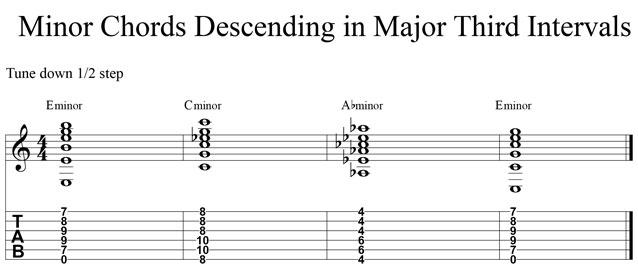
EXAMPLE 2: “Predestined” Sweeps
Sweep picking arpeggios were all the rage in the late Eighties—and no way was this song going to disappoint. It's still an incredible technique to acquire and can really open your playing to new ideas. The trick to this technique correctly is to get sufficient separation between the notes (so they don't just sloppily blur together) and to insure that the pick sweep is in an actual rhythm, not just raking the pick as quickly as possible across the strings.
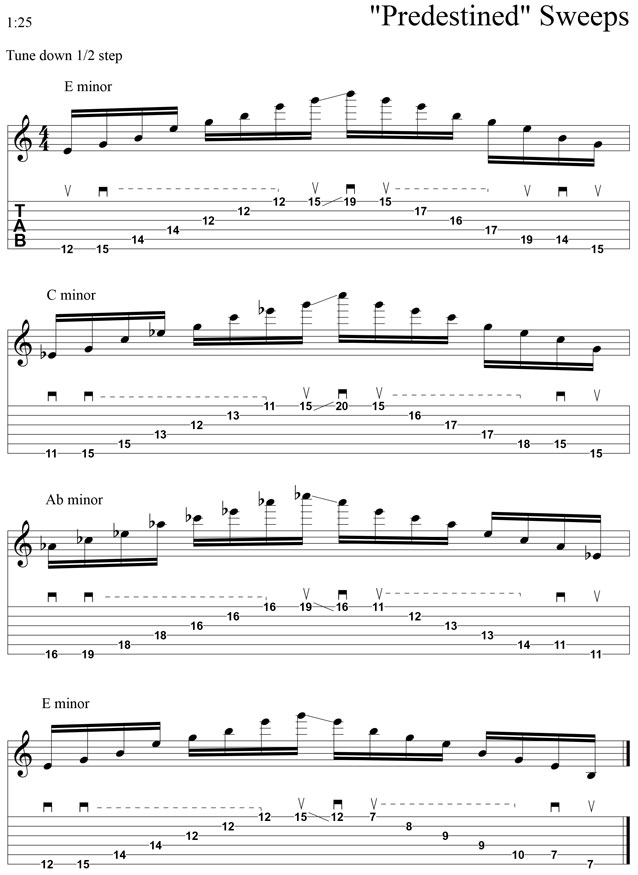
EXAMPLE 3: “Predestined” Alternate Picked Arpeggios
In AL I Trust. I spent countless of hours with Al Di Meola's instructional video for REH back in the day, and he’s definitely among my favorite guitarists of all time. One part that stood out to me was when he said he felt sweeping or tapping on the guitar was pretty much cheating. I, of course, was heart broken. But his stressing to be able to "play the notes, play the guitar" essentially meant being able to alternate pick those arpeggios as well, kids. EXAMPLE 3 is an example of this.
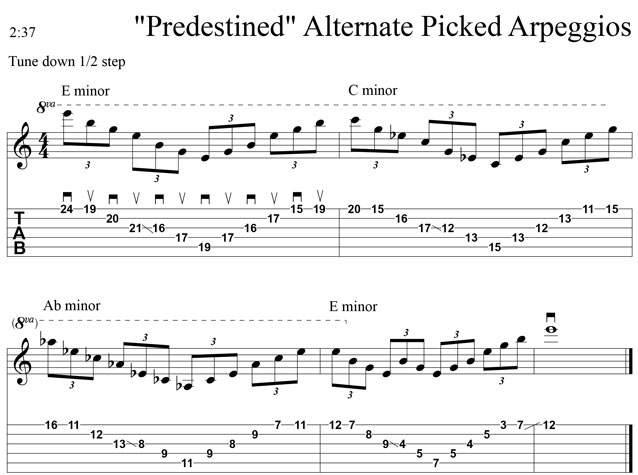
EXAMPLE 4: “Predestined” Solo
One of the most important qualities a guitarist can develop—any musician, actually—is the ability to tastefully target notes within the chord you're playing over. Playing through the changes. This is a lifelong endeavor, and I'm still a complete novice in my mind at this. In "Predestined," I start the solo with a slow melody that targets the E (root) of E minor and G (the 5th) of C minor. I then proceed to play four different notes over the C minor and Ab minor chords, but all on the 11th fret. This is done by utilizing a series of half-step and full-step bends and releases to play a chromatic line (again all on the 11th fret) on the G string. It's very Roy Buchanan influenced.
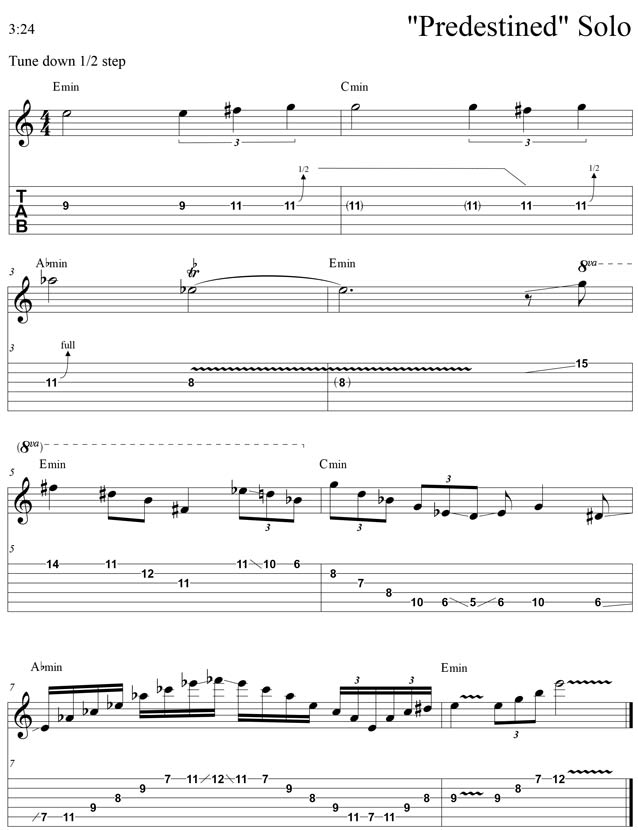
Major 7th Arpeggio Shape Shifting:
One of my favorite sounds you can achieve on the guitar is superimposing certain arpeggios over different chords to voice an extended arpeggio. Over the E minor chord, I descend in a G major 7th arpeggio shape, which creates the "sound" of an E minor 9th arpeggio by including the F# over the E. I then descend in an Eb major 7th arpeggio shape over the C minor, creating the "sound" of a C minor 9th by adding the D. Now my favorite move, I chromatically move up the Eb Maj 7th Arp to E Maj 7th, but play it over the Ab minor chord, creating a minor 6th "sound." So the phrase moves up chromatically, but the chords descend—and it still fits. So essentially it's the same exact Maj 7th arpeggio shape, shifted around to different frets over different chords to get extended chord tones.
If you can get your hands on it, Scott Henderson's instructional video, Jazz Fusion Improvisation, is the absolute bible for these kinds of ideas.
EXAMPLE 5: “Predestined” Alternate Picking Runs
Jason Becker is one of my biggest influences. His landmark album, Perpetual Burn, is required listening for any serious player. Especially considering he was only 18 when he recorded it. A true prodigy. One song in particular, "Air," is mind blowing. At the four-minute mark, Jason executes this amazing idea of having one guitar line ascend, landing on and sustaining a high note while another guitar line descends, landing on and sustaining a low note and the call-and-response cycle continues. This alternate speed picking climax to the "Predestined" solo is my take on that idea.
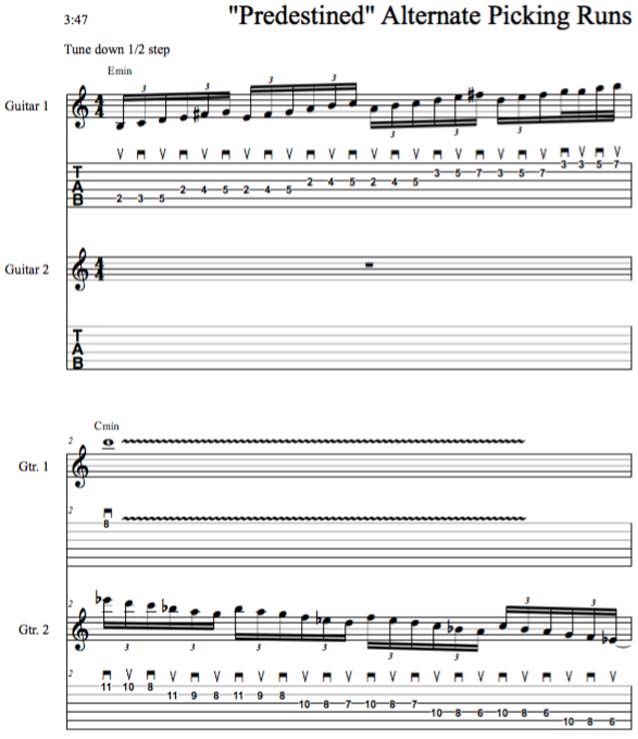
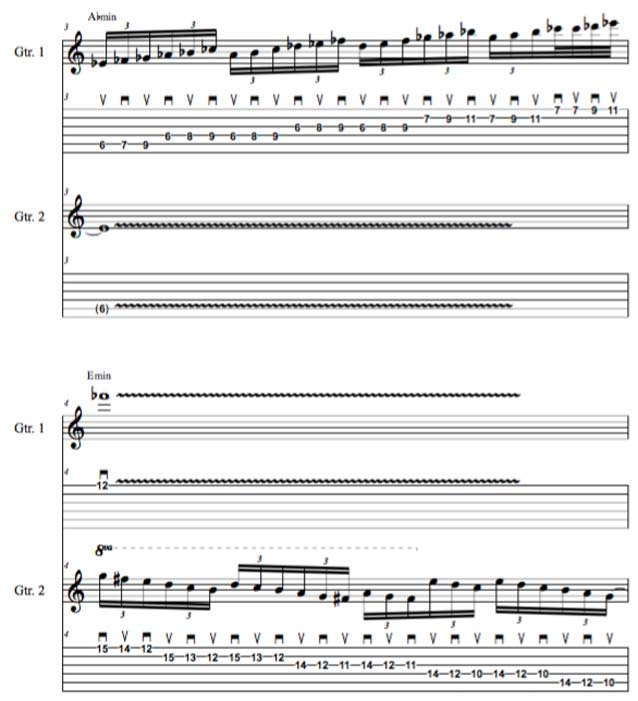
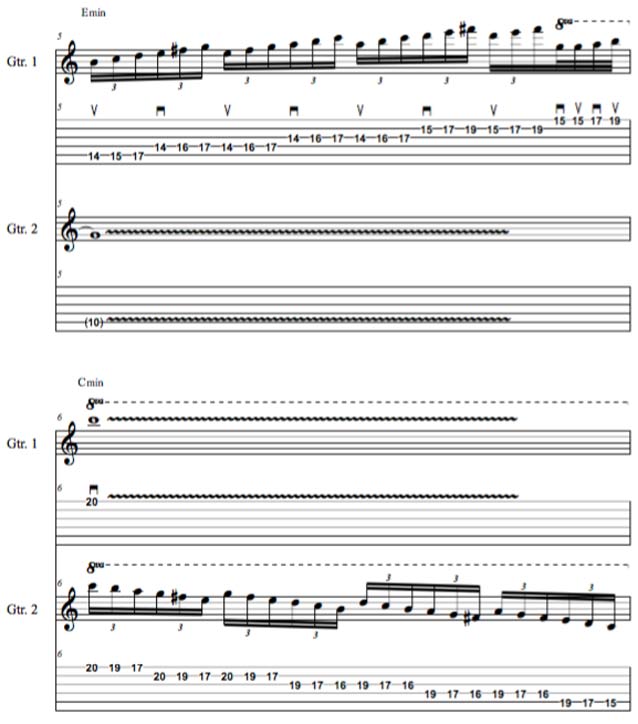
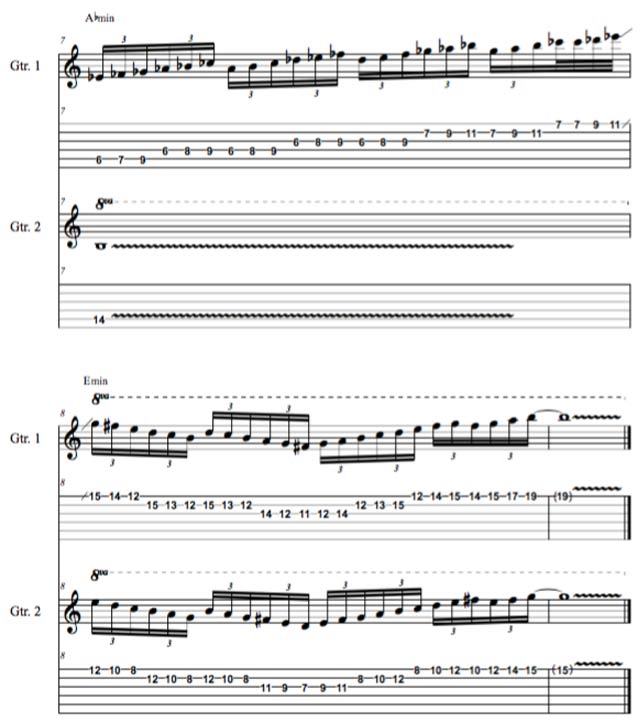
Enjoy, have fun, check out MaelstroM's Facebook page, and I'll be seeing all of you in the next installment.
Joey Lodes is the guitarist in MaelstroM. He has lectured at Juilliard, was selected to perform at the Guitar Gods Festival in 2016 with Steve Vai and Yngwie Malmsteen—and his guitar work has been included in courses for TrueFire.com.
Get The Pick Newsletter
All the latest guitar news, interviews, lessons, reviews, deals and more, direct to your inbox!










